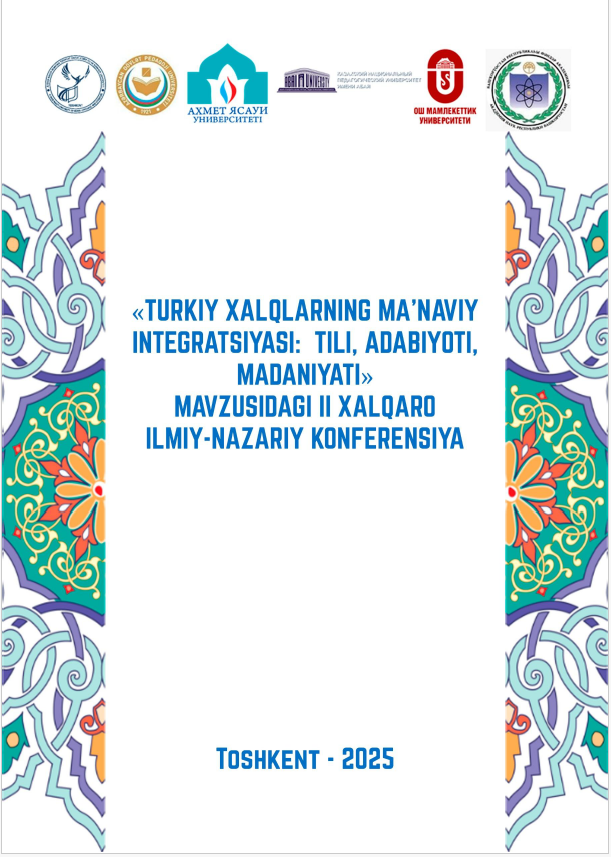PROCESSING OF CONSONANTS IN THE QARAQALPAQ LANGUAGE
Keywords:
Turkic languages, Karakalpak language, consonants, types of consonants, processing of consonants.Remove Turkic languages, Karakalpak language, consonants, types of consonants, processing of consonants, inclusion and educationAbstract
One of the ancient Turkic peoples was the Karakalpak Turks. The Karakalpak language belongs to the Kipchak subgroup of the Turkic language family and is the official state language of the Karakalpak Autonomous Republic. The Karakalpak language is spoken by approximately 400,000 people. They live mainly in Uzbekistan. This language belongs to the Kipchak-Nogai branch, along with the Nogai, Kazakh and Karachay languages. Although it is lexically closer to the Kazakh language, it differs from them in terms of spelling. In general, all Turkic languages have preserved the linguistic features of the ancient Turkic languages, including their phonetic, lexical, morphological and syntactic structure. The Karakalpak written language begins with the establishment of Karakalpakstan (1925). The spoken language is very close to the Kazakh and Kyrgyz languages. The Karakalpaks used the Arabic alphabet in 1924-1928. In 1928, the Karakalpak alphabet was created and adopted based on the Latin script. The Karakalpak alphabet consisted of 32 letters, including 9 vowels and 23 consonants. Later, in 1932, under the influence of the Russians, they switched to the Cyrillic alphabet. Since 1996, the Latin-based Karakalpak alphabet has been adopted again. As in Azerbaijani Turkish, there are 23 consonants in Karakalpak Turkish, and during the formation of these consonants, various obstacles are encountered in the oral cavity of the air flow, some of which are formed based on noise, and some are formed on the basis of noise and voice. When we look at the processing of consonants in the Karakalpak language, we see that there is no complete unity in the classification of consonants (consonants) included in the phonetics of Turkic languages. The reason for this is that, since it was not possible to benefit from modern phonetic data provided by phonetic laboratories so far, it was carried out differently than it should have been.

